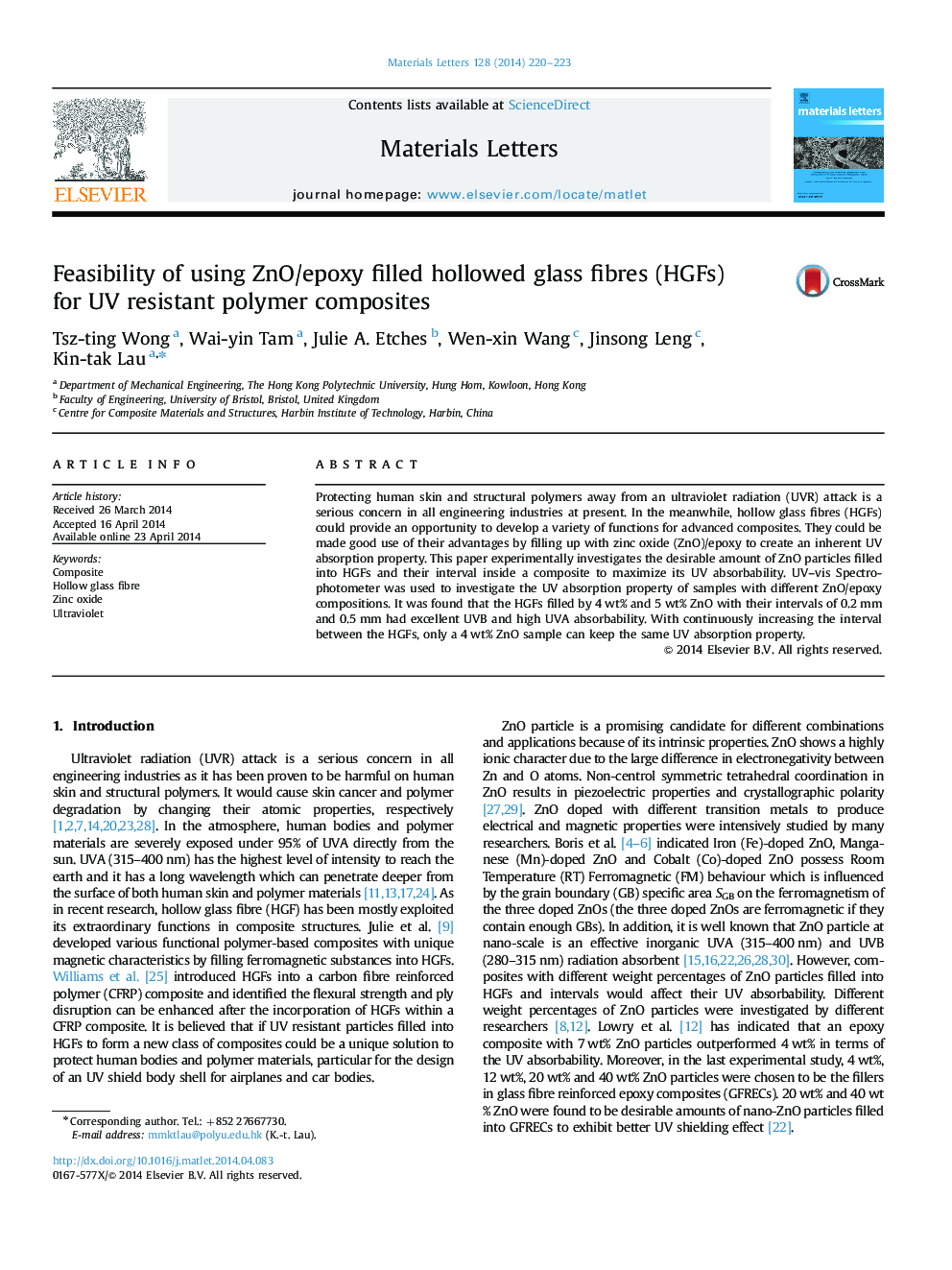| Article ID | Journal | Published Year | Pages | File Type |
|---|---|---|---|---|
| 8020355 | Materials Letters | 2014 | 4 Pages |
Abstract
Protecting human skin and structural polymers away from an ultraviolet radiation (UVR) attack is a serious concern in all engineering industries at present. In the meanwhile, hollow glass fibres (HGFs) could provide an opportunity to develop a variety of functions for advanced composites. They could be made good use of their advantages by filling up with zinc oxide (ZnO)/epoxy to create an inherent UV absorption property. This paper experimentally investigates the desirable amount of ZnO particles filled into HGFs and their interval inside a composite to maximize its UV absorbability. UV-vis Spectrophotometer was used to investigate the UV absorption property of samples with different ZnO/epoxy compositions. It was found that the HGFs filled by 4Â wt% and 5Â wt% ZnO with their intervals of 0.2Â mm and 0.5Â mm had excellent UVB and high UVA absorbability. With continuously increasing the interval between the HGFs, only a 4Â wt% ZnO sample can keep the same UV absorption property.
Keywords
Related Topics
Physical Sciences and Engineering
Materials Science
Nanotechnology
Authors
Tsz-ting Wong, Wai-yin Tam, Julie A. Etches, Wen-xin Wang, Jinsong Leng, Kin-tak Lau,
